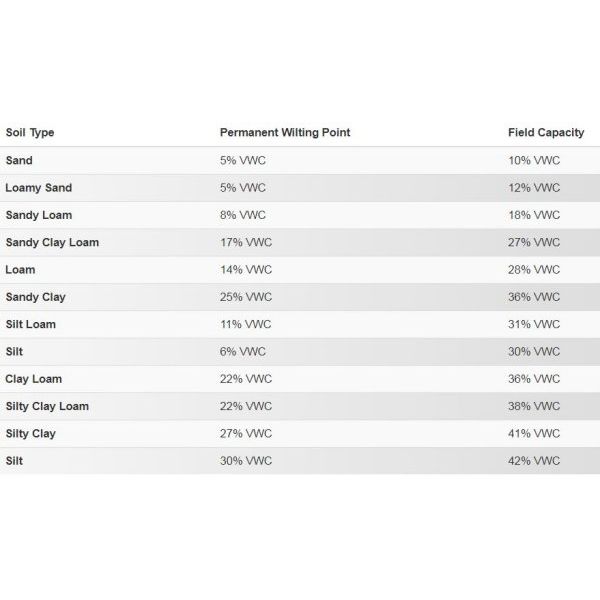

- Home
- Companies
- Connected Crops
- Articles
- The Ultimate Guide to Soil Moisture
The Ultimate Guide to Soil Moisture
Introduction
You need to get the right amount of water to crops at the right time. Water and nutrients are used most efficiently when your crops have access to the amount of water the crop needs and the soil can hold.
This article describes how to use the data provided by soil moisture probes to more effectively manage your farm. Observing and understanding the consequences of soil moisture fluctuations in your crops’ root zone will enhance your efforts to maximize yield and reduce wasted resources.This article will cover:
- higher yields
- better product quality
- improved plant vigour
- reduction in disease
- more effective use of water (water efficiency)
- reduced irrigation costs
Growers report that using soil moisture measurements has led to a 10% increase in yield. University case studies have demonstrated yield increased by more than 20% for some crops, as well as faster growing cycles by using soil moisture measurements effectively.
ConnectedCrops soil sensors provide research-grade accuracy in mineral soil – however they aren’t designed to work in pure air, pure water or custom soils. If you are monitoring VWC in potting soil, or custom soil mixes with different levels of organic content, then contact support have your sensors recalibrated.
The amount of water available to the plants depends on the texture of the soil, for example sandy soils retain much less water than loam soils. Loam soils are usually highly valued for their consistent crop production. Note that the greatest amount of crop available water is in the loam-to-silt loam texture.
The field capacity and permanent wilting points are shown in the table below for various soil textures. You don’t need to remember these levels, the ConnectedCrops mobile app automatically configures Field Capacity and Permanent Wilting Point based on the soil type that you specified when you configured your sensor.
Soil TypePermanent Wilting PointField CapacitySandLoamy SandSandy LoamSandy Clay LoamLoamSandy ClaySilt LoamSiltClay LoamSilty Clay LoamSilty ClaySiltViewing soil moisture data on your phone
- Green – VWC reading is between field capacity and wilting point
- Yellow – VWC reading is approaching either field capacity or wilting point
- Red – VWC reading has exceeded either field capacity or wilting point.

